Human Anatomy and Physiology Chapter 1
4.5(2)
Card Sorting
1/225
There's no tags or description
Looks like no tags are added yet.
Study Analytics
Name | Mastery | Learn | Test | Matching | Spaced |
|---|
No study sessions yet.
226 Terms
1
New cards
Superior (cranial)
toward the head end or upper part of a structure or the body; above
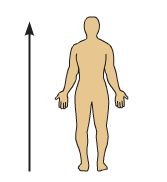
2
New cards
Inferior (caudal)
away from the head end or toward the lower part of a structure or the body; below
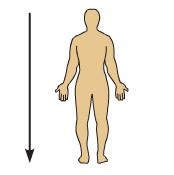
3
New cards
Ventral (anterior)
toward or at the front of the body; in front of

4
New cards
Dorsal (posterior)
Toward or at the back of the body; behind

5
New cards
Medial
toward or at the midline of the body; on the inner side of
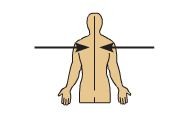
6
New cards
Lateral
away from the midline of the body; on the outer side of
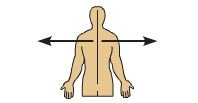
7
New cards
Intermediate
between a more medial and a more lateral structure

8
New cards
Proximal
closer to the origin of the body part or the point of attachment of a limb to the body trunk
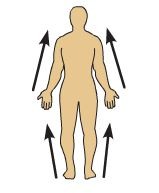
9
New cards
Distal
farther from the origin of a body part or the point of attachment of a limb to the body trunk
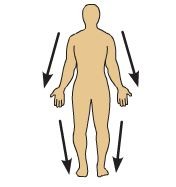
10
New cards
Superficial
toward or at the body surface

11
New cards
Deep (internal)
away from the body surface; more internal

12
New cards
Anatomical Position
erect, feet forward, arms at side with palms facing forward, head facing forward, internationally know
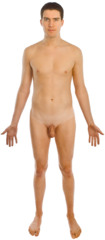
13
New cards
Directional Terms
allow us to explain where one body structure is in relation to another
14
New cards
Axial
fundamental division of our body. Makes up the main axis of our body, includes the head, neck, and trunk.
15
New cards
Appendicular
fundamental division of our body. relating to the limbs and their attachments to the axis.
16
New cards
Regional Terms
used to designate specific areas within major body divisions
17
New cards
Abdominal
pertaining to the anterior body trunk region inferior to the ribs
18
New cards
Acromial
pertaining to the point of the shoulder
19
New cards
Antebrachial
pertaining to the forearm
20
New cards
Antecubital
pertaining to the anterior surface of the elbow
21
New cards
Axillary
pertaining to the armpit
22
New cards
Brachial
pertaining to the arm
23
New cards
Buccal
pertaining to the cheek
24
New cards
Carpal
Pertaining to the wrist
25
New cards
Cephalic
pertaining to the head
26
New cards
Cervical
pertaining to the neck region
27
New cards
Coxal
pertaining to the hip
28
New cards
Crural
pertaining to the leg
29
New cards
Digital
pertaining to the fingers or toes
30
New cards
Femoral
pertaining to the thigh
31
New cards
Fibular (peroneal)
pertaining to the side of the leg
32
New cards
Frontal
pertaining to the forehead
33
New cards
Hallux
pertaining to the great toe
34
New cards
Inguinal
pertaining to the groin
35
New cards
Mammary
pertaining to the breast
36
New cards
Manus
pertaining to the hand
37
New cards
Mental
pertaining to the chin
38
New cards
Nasal
pertaining to the nose
39
New cards
Oral
pertaining to the mouth
40
New cards
Orbital
pertaining to the eye socket (orbit)
41
New cards
Palmar
pertaining to the palm of the hand
42
New cards
Patellar
pertaining to the anterior knee (kneecap) region
43
New cards
Pedal
pertaining to the foot
44
New cards
Pelvic
pertaining to the pelvis region
45
New cards
Pollex
pertaining to the thumb
46
New cards
Pubic
pertaining to the genital region
47
New cards
Sternal
pertaining to the region of the breastbone
48
New cards
Tarsal
pertaining to the ankle
49
New cards
Thoracic
pertaining to the chest
50
New cards
Umbilical
pertaining to the navel
51
New cards
Acromial
pertaining to the point of the shoulder
52
New cards
Calcaneal
pertaining to the heel of the foot
53
New cards
Dorsum
pertaining to the back
54
New cards
Gluteal
pertaining to the buttocks or rump
55
New cards
Lumbar
pertaining to the area of the back between the ribs and hips; the loin
56
New cards
Occipital
Back of the head
57
New cards
Otic
pertaining to the ear
58
New cards
Perineal
pertaining to the region between the anus and external genitalia
59
New cards
Plantar
pertaining to the sole of the foot
60
New cards
Popliteal
pertaining to the back of the knee
61
New cards
Sacral
pertaining to the region between the hips (overlying the sacrum)
62
New cards
Scapular
pertaining to the scapula or shoulder blade area
63
New cards
Sural
pertaining to the calf or posterior surface of the leg
64
New cards
Vertebral
pertaining to the area of the spinal column
65
New cards
Anterior/Ventral Body

66
New cards
Posterior/Dorsal Body
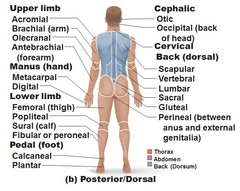
67
New cards
Sagittal
a vertical plane that divides the body into right and left parts

68
New cards
Median Plane (midsagittal plane)
sagittal plane that lies exactly in the midline
69
New cards
Parasagittal Planes
all other sagittal planes offset from the midline
70
New cards
Frontal Planes (Coronal Plane)
like sagittal plane lie vertically, divide body into anterior and posterior parts

71
New cards
Transverse/Horizontal Plane
runs horizontally from right to left, dividing the body into superior and inferior parts. (Transverse is perpendicular to long axis of an organ, horizontal is from front to back)
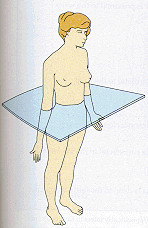
72
New cards
Oblique Sections
cuts made diagonally between the horizontal and the vertical planes
73
New cards
Dorsal Body Cavity
protects the fragile nervous system organs, has 2 subdivisions
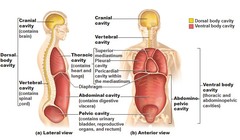
74
New cards
Cranial Cavity
in the skull, encases the brain
75
New cards
Vertebral Cavity (Spinal Cavity)
runs within the bony vertebral column, encloses the delicate spinal cord
76
New cards
Ventral Body Cavity
the more anterior and larger of the closed body cavities, has 2 major subdivisions, houses internal organs called Viscera
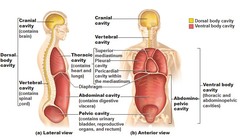
77
New cards
Thoracic Cavity
surrounded by the ribs and muscles of the chest
78
New cards
Pleural Cavities
lateral subdivision of Thoracic Cavity, enveloping a lung, and the Medial Mediastinum
79
New cards
Medial Mediastinum
contains the pericardial cavity
80
New cards
Pericardial Cavity
encloses the heart and also surrounds the the remaining thoracic organs (esophagus, trachea, and others)
81
New cards
Abdominopelvic Cavity
seperated from thoracic cavity by the diaphram, a dome shaped muscle important in breathing. Has abdominal and pelvic cavities
82
New cards
Abdominal Cavity
Contains stomach, intestines, spleen, and liver, and other organs
83
New cards
Pelvic Cavity
Contains urinary bladder, reproductive organs, and rectum
84
New cards
Serosa (Serous Membrane)
the walls of the ventral body cavity and the outer surfaces of the organs it contains are covered by this thin double layered membrane
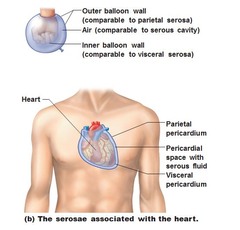
85
New cards
Parietal Serosa
lines internal body walls
86
New cards
Visceral Serosa
covers the internal organs
87
New cards
Abdominopelvic Quadrants
Divisions used primarily by medical personnel
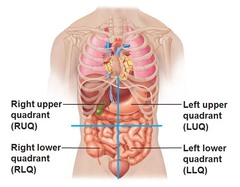
88
New cards
Abdominopelvic Regions
Nine divisions used primarily by anatomists
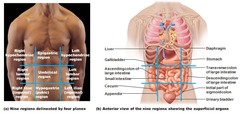
89
New cards
Umbilical region
The centermost region, which includes the umbilicus
90
New cards
Epigastric Region
LOcater superior to the umbilical region
91
New cards
Right and Left Iliac or Inguinal Regions
located lateral to hypogastric regions, superior part of the hip bone
92
New cards
Right and Left Lumbar Regions
lie lateral to the umbilical region
93
New cards
Right and Left Hypochondriac Regions
Flank the epigastric region laterally
94
New cards
Oral and Digestive Cavities
aka mouth, teeth and tongue, this cavity is part of and continuous with the cavity of the digestive organs which opens to the exterior at the anus.
95
New cards
Nasal Cavity
located within and posterior to the nose, part of the respiratory system passageways
96
New cards
Orbital Cavities
in the skull house the eyes and present them in an anterior position
97
New cards
Middle Ear Cavities
carved into the skull lie just medial to the cardrums. contain tiny bones that transmit sound vibrations to the hearing receptors in the inner ears.
98
New cards
Synovial Cavities
Are joint cavities, enclosed within the fibrous capsules that surround freely movable joints of the body i.e. elbow and knee joints.
Secreate a lubricating fl. tht reduces friction as the bones move acrossone another.
Secreate a lubricating fl. tht reduces friction as the bones move acrossone another.
99
New cards
What is anatomy?
the study of structure of body parts and their relationship to one another
100
New cards
What is physiology?
the study of function of the body - how the body parts work and carry out their life sustaining activities